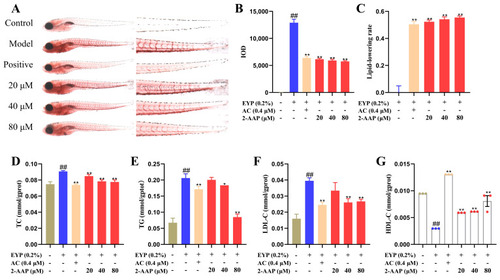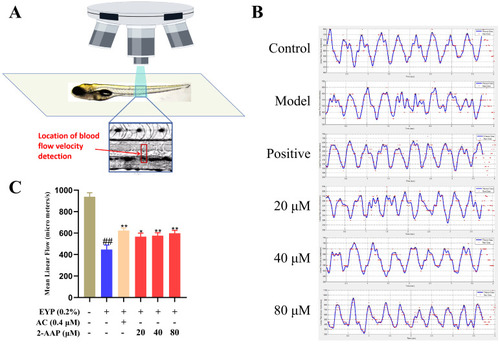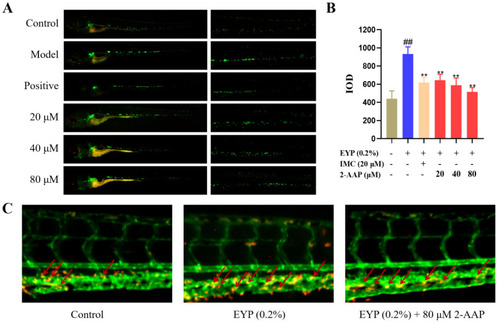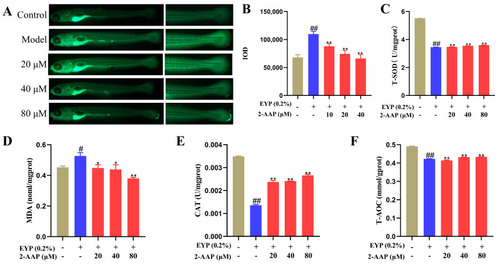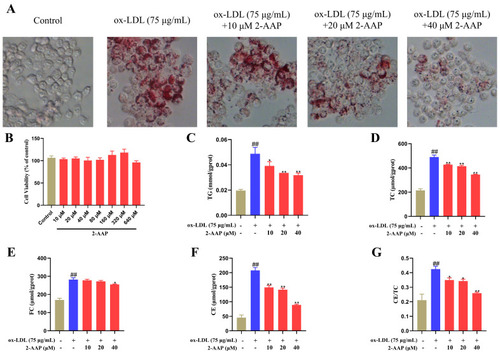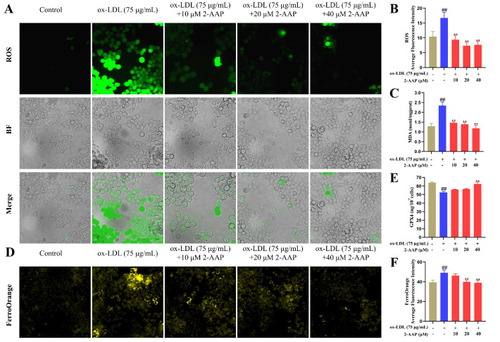- Title
-
2-Acetamidophenol (2-AAP) Suppresses the Progression of Atherosclerosis by Alleviating Hyperlipidemia and Attenuating the Ferroptosis Pathway
- Authors
- Zang, X., Wang, Y., Han, C., Cui, L., Liu, H., Tian, S., Liu, K., Li, P., Sun, C., Xia, Q., Zhang, Y.
- Source
- Full text @ Mar. Drugs
|
Effects of 2-AAP treatment on lipid metabolism in zebrafish after egg yolk powder feeding. ( |
|
2-AAP improves blood flow velocity and stability. ( |
|
2-AAP improves vascular inflammation. ( |
|
2-AAP improves oxidative stress. ( |
|
2-AAP reduces macrophage phagocytosis of oxidized lipids. ( |
|
2-AAP improves oxidative stress and ferroptosis. ( |
|
Effects of 2-AAP on genes in zebrafish. ( |
|
Enrichment analysis. ( |
|
GSEA. ( |
|
Expression of ferroptosis-, glutathione metabolism-, lipid metabolism-, inflammation-, and antioxidant-related genes following 2-AAP exposure. In the column chart, brown represents the blank group, blue represents the model group, and red represents the administration group. Compared with the control group, # |

